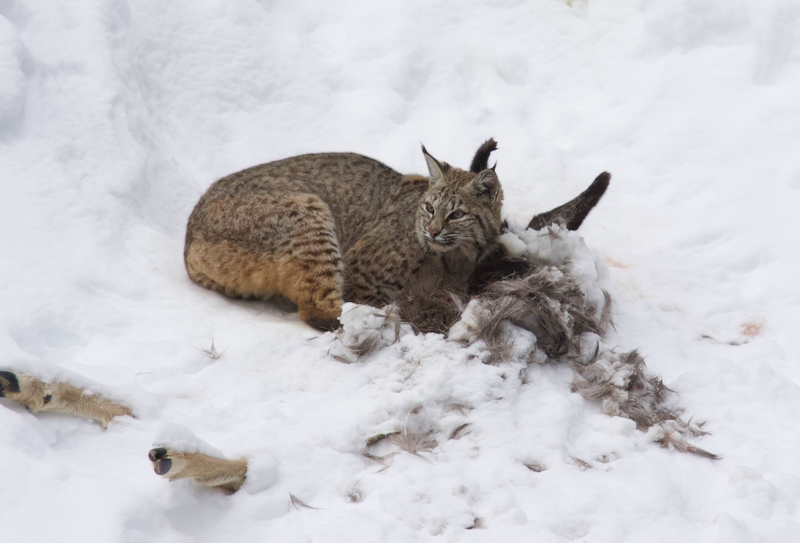“From Bacteria to Bobcat”
January 15, 2023 - 3 Comments
We started today by coming together to watch Old Faithful erupt. It teased us for 45 minutes with small belches of water and steam before finally putting on a show. This was followed by a tour of the Upper Basin by Ranger Colin, whose passion for the world’s greatest concentration of geysers got us excited for our upcoming day of observing geothermal features. We had just missed Colin’s favorite, Beehive Geyser, due to Old Faithful’s antics holding us up.
At our next stop, we split up to choose our own adventure. Some went on a short but snowy hike to Black Sand Pool, laying down to feel the thumping from below. The others took to the boardwalks around Black Sand Basin, braving boardwalks covered in packed snow and slippery conditions, only to have to pause for two bison who decided to walk across the warm ground after wading through the cold river winding through the geysers and springs. Remember to stay AT LEAST 25 yards from a bison! They finally disappeared into the mist, and we continued our explorations.

Midway Geyser Basin started with the Excelsior Geyser Crater and Grand Prismatic Spring. The combination of snow, warm steam, and ice make the boardwalks here very slippery, but we persevered. We saw the thermophilic bacterial mats, the silica deposits in the flowing waters, and ephydrid flies! We witnessed larva and adult flies, all happily eating the bacterial mats. They stay active in winter because the waters coming from the springs keep their environment warm enough for them to live.

The next stop was Fountain Paint Pots. It was like a scene from another planet: smaller geysers erupting, steam rising from fumaroles, acidic mud bubbling, and colors from both mineral deposits and bacterial mats. Dustin gave us a lesson on Thermus aquaticus, one of the many bacteria making up the colorful mats where the warm waters from thermal features flow over the land.

Hitting the road again in the snowcoach, our driver John had to deal with bison in the roadway. He handled it like a professional, patiently waiting for the herd to decide to move out of the way. This was just out first encounter with road-bison today!
We stopped to see Firehole Falls, where the Firehole River splits the difference between two ancient lava flows, tumbling down exposed rhyolites. While exploring the stop and enjoying the view, we found a nice snowbank that made for a perfect slide.
Further down the Firehole Canyon we came upon a rare sight: a bobcat was feeding on a mule deer carcass on the other side of the river! The bobcat had been feeding on this carcass for days. No one knew how the deer died, but word had spread, and there were many snowcoaches pausing here to take photos. And the bobcat could not have cared less.

Next, we had a brief stop at Gibbon Falls, enjoying once again the power of flowing water to reshape the land. From there we drove home, but on the way we had an opportunity to experience stillness and silence. Stopping in the middle of Swan Lake Flats, we all stepped out of the snowcoach, John turned off the lights and engine, and we enjoyed a few minutes just absorbing the night-time scene.
